
First and foremost let me start by saying that your body has certain needs and requirements on a daily basis that we tend to be unaware of. We put things into our mouths without really thinking about it. I am going to provide you a list of the most important superfoods you’ll ever need for your pregnancy. Our babies deserve to have to most nutrient-dense, energy filled foods that we can provide them as they are developing, and let me tell you that keeping these superfoods in your daily diet is going to eliminate (mostly) the cravings you have for unhealthy food choices. Notice that what I’m trying to get you to do is introduce new foods into your diet without telling you all the things that you shouldn’t be eating. That never works. Well hardly ever. If you start introducing these foods into your diet, you will begin to crave other such healthy choices. Remember, like craves like. If you give your body tons of simple carbs, white flour, refined sugars, meats and fried foods that is what you will continue to crave.
Whether or not you have an addictive personality doesn’t matter, your body will very easily become addicted to what you expose it to; sugar, caffeine, salt, etc. The superfoods Bible as I now call it, is such a great book. You need to get this book and read it for yourself. I’m going to give you a basic list here but you have to get this book and do your own research. It is written by David Wolfe and it is called simply Superfoods: The Food and Medicine of the Future. I’ve learned so much from reading his books, and you will too. Remember, when you’re pregnant is the time to turn your body into a fine-tuned machine, so picking up a book other than a baby book about nursing, birthing or child rearing is OK. You want a fat-free pregnancy just like me, so let’s get you started:
• Goji berries• Cacao (not chocolate, but organic, raw cacao)
• Maca
• Bee pollen/bee products
• Spirulina
• AFA blue-green algae
• Marine phytoplankton
• Aloe vera
• Hempseed
• Coconuts and coconut products (i.e. Raw Coconut Oil!)
I can already see you rolling your eyes and/or staring quizzically at the list wondering what half of these items are. Now I’m not telling you to go out to Whole Foods and purchase everything on this list and start eating it. I’m just cluing you in as to what your body needs, and we’re going to work these things slowly into your diet. It is not always easy, but it is doable. I’ll tell you the way I work 90% of these items into my diet is through my smoothies. Oh yes. Every day I make a giant blender full of green, water-rich, nutrient dense smoothie that I “graze” on through the day. I cram as much of these foods into that smoothie as possible, and don’t worry about the rest.
I am going to briefly tell you about the benefits of a couple of these foods, but again, encourage you as always to do your own research and come up with your own opinions and decisions that you can live with. For more detail on these foods, and to read about foods I don’t explain, purchase David Wolfe’s book. http://www.davidwolfe.com/, http://thebestdayever.com/
Every little bit helps, and again let me encourage you that in adding these foods into your diet, you are going to reduce your cravings for unhealthy or unnecessary foods, reduce your sugar cravings, and help your body only add on pounds that are going to benefit both you and baby, and come off easily after you’ve delivered. Trust me. And read David Wolfe’s book. That is where I am getting this information I am about to share with you. The proof is always in the pudding, and so far my pudding’s been fat-free.
Goji Berries

These little berries are outstanding! Quite possibly the most nutrient dense fruit on earth, providing us with a complete protein source, including 19 different amino acids, all 8 essential amino acids, 21 or more trace minerals (such as zinc, iron, copper, calcium…) and vitamins B2, B6 and vitamin E. Goji berries can contain up to 11mg of blood-building iron per 100 grams and much, much more. They are some of the highest antioxidant=containing foods in the world. They have 2-4 times the amount of antioxidants in blueberries. ALL these things good things for you AND your baby!
So how do you work these berries into your diet? Many people that I know eat them and love them just plain. You can add them into your homemade trail mixes (with almonds, raw cacao nibs, other dried fruits/nuts), or if you’re like me, and for some reason, especially in my first trimester, I just couldn’t stomach them. No reason why, it was just one of those things that I couldn’t get down. So I simply began throwing a handful into my smoothies, and that works great! You can find these berries at Whole Foods, or online usually, but make sure you are getting the real, organic deal. Navitas Naturals is a good brand, as well as the berries carried by www.sunfare.com (where you will also find the other top 10 superfoods).
Cacao is the very best food source of antioxidants, magnesium, iron, chromium, manganese, zinc, copper, vitamin C, omega-6 fatty acids, PEA (phenylethylamine; a major class of chemicals that we produce in our bodies when we fall in love!), anandamide (an endorphin that the human body naturally produces after exercise, that “feel good” feeling), tryptophan (critical for the production of serotonin; serotonin diminishes anxiety and improves our body’s stress-defines), serotonin (the primary neurotransmitter in the body), fiber and methylxanthines (such as theobromine, which is an effective antibacterial substance. Again, these are all amazing things for your body and for your developing baby, don’t you think? I for one throw a handful into my smoothies (a yummy one is unsweetened vanilla almond milk, a banana, a scoop of chocolate green powder, some maca powder and a banana, a little ice, blend) and also eat it just a few pinches at a time with some almonds, or alone. It has almost an espresso taste too it, in that it is chocolaty, but slightly bitter.
Maca is known to help improve these following conditions: anemia; chronic fatigue; depression; infertility and sterility in humans and livestock; lack of libido; malnutrition; menopausal symptoms; menstrual discomfort and disorders; poor memory; stomach cancer; stress tension; tuberculosis.
I buy maca powder, and just add it to things I’m making. That’s how I get it into my diet. Mainly I put it in smoothies, but you can add it to homemade desserts, sprinkle some in your hot/cold cereal, or anyway you like. It has a slightly malted flavor, is slightly sweet, and some people thing it has a slight butterscotch flavor. I put a scoop in my hot chocolate the other night and mixed it all up, it was delicious!!! Get David Wolfe’s book (again, where I am getting all this info from) and there are tons of recipes for you.
Spirulina
Yet another amazing food source; you will want to put this into your diet right away. I love the Barlean’s Greens brand of green powder, this is the one I use in all my smoothies. It tastes great, and they even use stevia to sweeten it. They have a whole mess of amazing green ingredients for you in there, including a great dose of sea greens, which has 1250mg of spirulina.
Spirulina includes chlorophyll, protein, vitamins, major minerals, trace minerals, essential fatty acids, nucleic acids (RNA & DNA), polysaccharides, and a ton of antioxidants. Spirulina is 65%-71% pure protein (the highest concentration found in any food) , is a complete protein source, contains all 8 essential amino acids, and 18 amino acids total. It is rich in vitamin A, B1, B2, B6, E and K (vitamin K is a shot that they will give your baby as soon as he/she is born to promote blood-clotting factors… spirulina can give your baby a head start with producing vitamin K!) Full-spectrum proteins sources are so important because they help balance brain chemistry. And let’s face it girls, our brains aren’t exactly balanced through pregnancy, so this food source is key for us.
Simple enough, isn’t it? We’ve all seen the plant, or you’ve probably seen the jugs of the juice you can buy at your local health food store or Whole Foods. Let me just touch on aloe vera here, and you can do the rest of your own research. Aloe contains vitamins A, C and E, the minerals sulfer, calcium, magnesium, zinc, selenium and chromium, as well as antioxidants, fiber, amino acids, enzymes, sterols, lignins, and, most importantly, polysaccharides (help your immune system fight chronic viral, nanobacteria, and fungal infections). Aloe is lubricating to your joints (this really helps towards the end of pregnancy girls), brain, skin and nervous system.
Hempseed
Hemp is considered to be one of the most nutritious food sources on the planet. Hempseeds contain all the essential amino acids and essential fatty acids necessary to maintain healthy human life.
Coconut products are beneficial in the following ways: they improve digestion and absorption of fat-soluble vitamins and amino acids (when we’re pregnant girls, we need all the help we can get, right?!); they contain antiviral, antifungal, and antimicrobial saturated fatty acids, helping to naturally fight off viruses (colds and flu’s ladies, H1N1, and other viruses you might be struggling with such as HPV, HSV1 or 2, and more), bacteria (UTI’s!!!), and fungal overgrowth (i.e. yeast infections).
I drink coconut water after every Bikram yoga session to replace all my electrolytes naturally without any of that sugary, useless stuff in Gatorade, Powerade, etc. A great site to check out about more coconut nutrition is: http://www.cocotap.com/nutrition.htm. In the electrolyte department, an 8oz. serving contains: 600-680mg potassium (12%-14% of the daily value), 40-60 mg sodium (2%-3% of the daily limit), 4%-6% of your daily calcium needs and 6%-10% of your daily magnesium needs. All in a tasty, clear, coconut water. This is a great way to rehydrate and get these nutrients into your body.
I hope this gives you a good place and a good reason to start researching these superfoods on your own and adding them into your diet. As I mentioned several times I would get a copy of David Wolfe’s book and devour it. There are so many other great books out there, and David provides many other resources in his book as well.
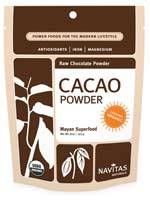
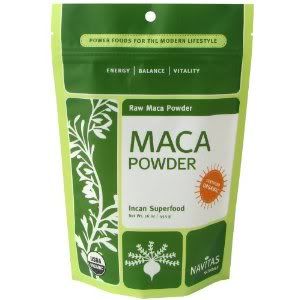
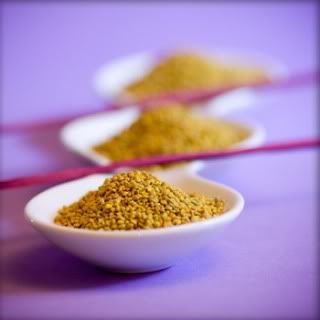
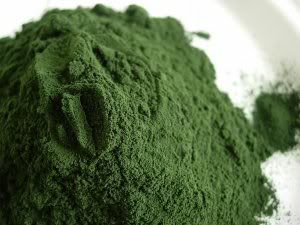

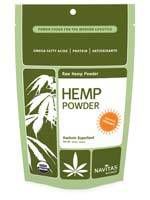


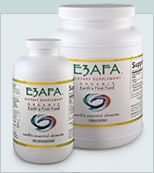


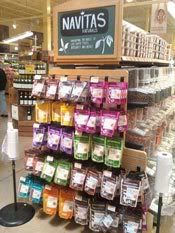
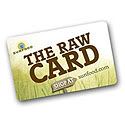
No comments:
Post a Comment